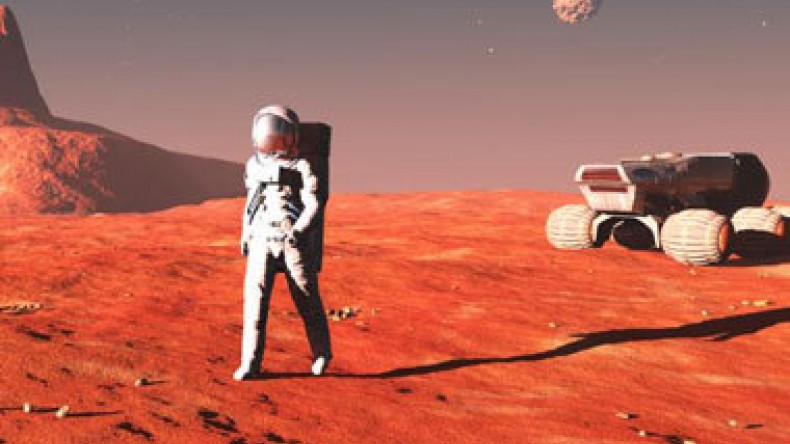
Life on Mars: How the caustic dust, atmospheric pressure, and low gravity may alter the human body
As outlined by the bipartisan NASA Authorization Act of 2010 and the U.S. National Space Policy, by the 2030s NASA plans to send humans to Mars. But NASA isn't alone in its galactic ambitions; nonprofit foundation MARS ONE plans on sending seeds for germination to the Red Planet in only three short years, in hopes to get things prepared for humans as early as 2025, Medical Daily reports.
Although we may possess the technological capability to get us to Mars, what would happen to the human body once we actually land?
Don’t Even Think Of Stepping Out Without Your Spacesuit
Sci-fi movies such as Total Recall and Mission to Mars have severely downplayed the effects that exposure to Martian elements would have on the human body, making it seem like we’d be OK to take off our spacesuits for just a few minutes. This couldn’t be further from the truth.
Mars and Earth are often called "sister planets" for their similar sizes and proximity to the Sun, but don’t let this moniker fool you. The environment on Mars is not only completely inhabitable for humans but also deadly.
First off, the average temperature on Mars wanes between 70 degrees Fahrenheit and minus 225 degrees. Although these temperatures aren’t exactly impossible for humans to survive in, they are difficult.
The red dust on Mars could pose a serious problem to astronauts. As reported by Wired, for humans, living on the surface of Mars would be like living in a giant salt flat. The dust would not only eat away at their equipment but also may affect their health. The Mars Phoenix landers proved that the Martian soil contains chemicals called perchlorates, or highly chlorinated salts. The chemical exists on Earth as well, and too much exposure can harm the human thyroid. On top of the perchlorates, the dust may also contain carcinogens and produce serious allergic reactions in humans. It’s suspected that it may even burn human skin in a similar way to lye or bleach, although this is not yet confirmed.
The Armstrong limit is a physics term which relates to the altitude that produces an atmospheric pressure so low that water boils at the normal temperature of the human body. The limit is 0.0618 atmosphere of 1.9 inches of mercury (a form of measurement taken by a barometer). Mar’s average atmospheric pressure is 0.224 inches of mercury, as reported by NASA, making it under the Armstrong limit. This means that if a person were to walk exposed on the Martian surface, their saliva, tears, skin mucous, and most importantly, the water in their lungs, would evaporate. This wouldn’t cause immediate death but would be extremely unpleasant. The Martian atmosphere, in addition, contains nearly no oxygen, so humans simply would not be able to breathe.
What Happens If You Are Wearing A Suit?
So, let’s imagine that humans have a space suit which supplies them with air and controls their atmospheric pressure. This is still not enough to keep them alive on Mars.
Mars has about 38 percent as much gravity as the Earth. This means that a man weighing 220 pounds on Earth would only weigh 80 pounds. While being light enough to bounce around like a child may sound fun, in actuality, gravity is important for much more than determining one's weight. Without enough gravity, human health would quickly deteriorate. Dr. Kevin Fong, author of Extreme Medicine, explained in Wired that less gravity would cause humans to quickly lose muscle mass, shrinking our legs and causing our hearts to become deconditioned and weak.
Our bones are not immune to the effects of less gravity and would soon develop osteoporosis as well. All the calcium lost from the bones would find its way into our bloodstream, causing constipation, kidney stones, and even psychotic depression. Interestingly, there is one added benefit to this reduced gravity: It makes us taller. According to LiveScience, astronauts grow about 2 inches in space due to the stretching of the spine.
Currently, scientists around the world are working hard to develop technologies that will address each problem and allow for humans to not only travel to Mars but also thrive on it.
Newsfeed
Videos






























